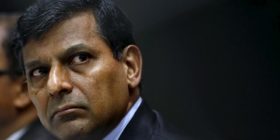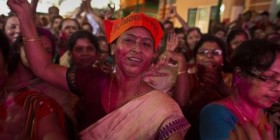Here’s what happened yesterday: someone on the internet typed “Top 10 Criminals” into Google’s Image Search and was confronted with an image of Prime Minister Narendra Modi — right next to American gangster Al Capone and the mastermind behind the 1993 Mumbai blasts, Dawood Ibrahim.
It got so crazy that Google apologised to the Prime Minister and now displays this disclaimer when you use the search term in question: These results don’t reflect Google’s opinion or our beliefs; our algorithms automatically matched the query to web pages with these images.
Which basically translates as: Nothing to see here, we’re just doing our job.
To understand why this happened, it’s important to understand how Google search works. Google ranks every web page it indexes based on over 200 individual factors — everything from if your site uses the secure HTTPS protocol to encrypt its content to whether it is mobile-optimised. These factors, collectively, are known as the Google ‘algorithm’ and no one outside the company knows them all. The algorithm is the search giant’s secret sauce. It’s literally what makes Google Google.
Two of the biggest factors responsible for the ranking of your web page in Google Search are how many people link to you and how important they are (the importance is determined by how many people link to them, in turn). If a massive, heavily linked-to website like The Washington Post or The New York Times link back to a Hindustan Times story — our exclusive Narendra Modi interview for instance — the Hindustan Times Modi interview will automatically rank higher in Google search whenever people search for “Narendra Modi” on Google.
This is exactly what happened with Modi’s unfortunate inclusion in the list of criminals.
In 2014, The Telegraph, one of the biggest newspapers in the UK, published an article headlined: “Top Indian educationalist accused of racism over portrayal of criminal ‘negroes'” with a lead image of Narendra Modi. The image’s metadata — background information associated with an image that gives a search engine an idea of what it is — contained the following text: “India’s Prime Minister Narendra Modi : Top Indian educationalist accused of racism over portrayal of criminal ‘negroes'” This particular bit of metadata — literally because the words “Modi” and “criminal” appeared so close to each other — is why the Prime Minister’s photo appears when you type top 10 criminals into Google Image Search.
If you still think it’s Google’s fault, NDTV Gadgets suggests typing the same phrase into other search engines like Bing and DuckDuckGo — the results are the same. And oh, if you’re ranting on Twitter asking Google to remove Modi from #Top10Criminals, you might just be making things worse.
This is how PM Modi showed up in Google’s #Top10Criminals list
Here’s what happened yesterday: someone on the internet typed “Top 10 Criminals” into Google’s Image Search and was confronted with an image of Prime Minister Narendra Modi — right next to American gangster Al Capone and the mastermind behind the 1993 Mumbai blasts, Dawood Ibrahim.
It got so crazy that Google apologised to the Prime Minister and now displays this disclaimer when you use the search term in question: These results don’t reflect Google’s opinion or our beliefs; our algorithms automatically matched the query to web pages with these images.
Which basically translates as: Nothing to see here, we’re just doing our job.
To understand why this happened, it’s important to understand how Google search works. Google ranks every web page it indexes based on over 200 individual factors — everything from if your site uses the secure HTTPS protocol to encrypt its content to whether it is mobile-optimised. These factors, collectively, are known as the Google ‘algorithm’ and no one outside the company knows them all. The algorithm is the search giant’s secret sauce. It’s literally what makes Google Google.
Two of the biggest factors responsible for the ranking of your web page in Google Search are how many people link to you and how important they are (the importance is determined by how many people link to them, in turn). If a massive, heavily linked-to website like The Washington Post or The New York Times link back to a Hindustan Times story — our exclusive Narendra Modi interview for instance — the Hindustan Times Modi interview will automatically rank higher in Google search whenever people search for “Narendra Modi” on Google.
This is exactly what happened with Modi’s unfortunate inclusion in the list of criminals.
In 2014, The Telegraph, one of the biggest newspapers in the UK, published an article headlined: “Top Indian educationalist accused of racism over portrayal of criminal ‘negroes'” with a lead image of Narendra Modi. The image’s metadata — background information associated with an image that gives a search engine an idea of what it is — contained the following text: “India’s Prime Minister Narendra Modi : Top Indian educationalist accused of racism over portrayal of criminal ‘negroes'” This particular bit of metadata — literally because the words “Modi” and “criminal” appeared so close to each other — is why the Prime Minister’s photo appears when you type top 10 criminals into Google Image Search.
If you still think it’s Google’s fault, NDTV Gadgets suggests typing the same phrase into other search engines like Bing and DuckDuckGo — the results are the same. And oh, if you’re ranting on Twitter asking Google to remove Modi from #Top10Criminals, you might just be making things worse.






Leave a reply